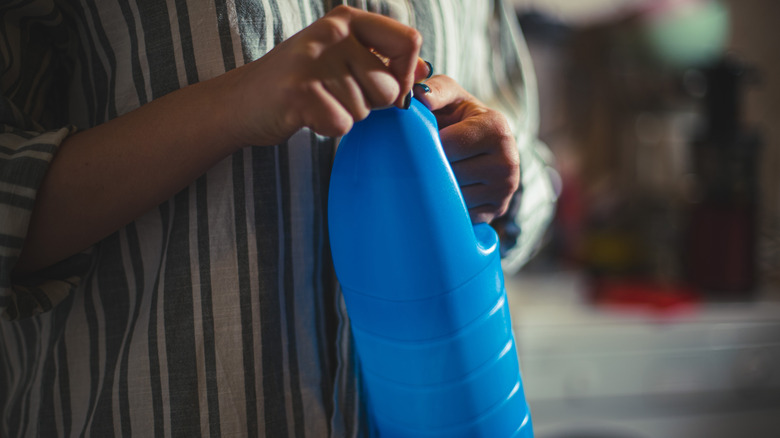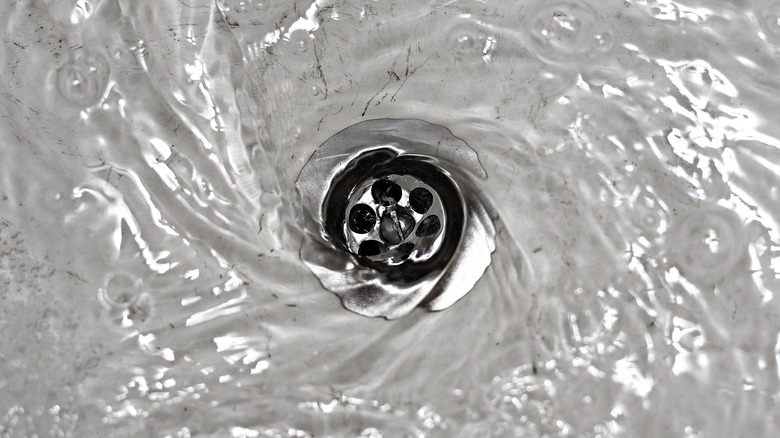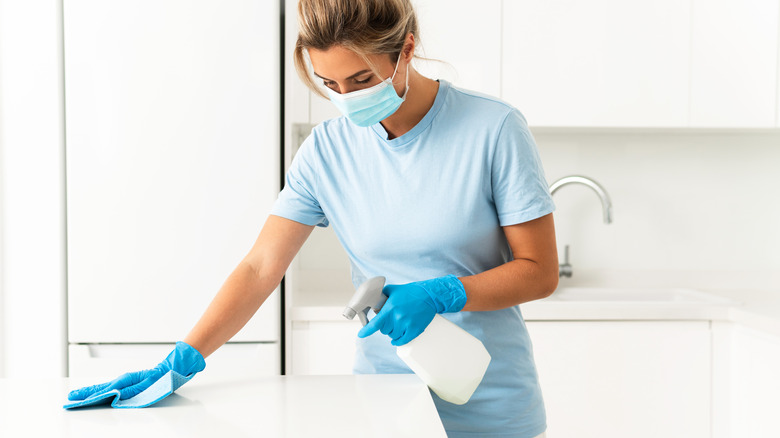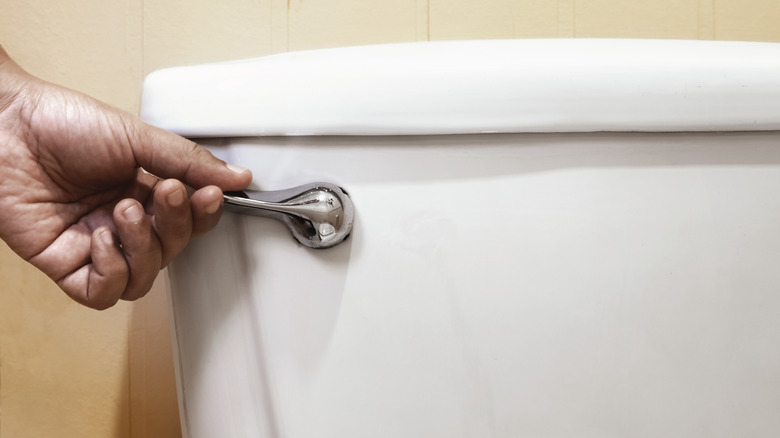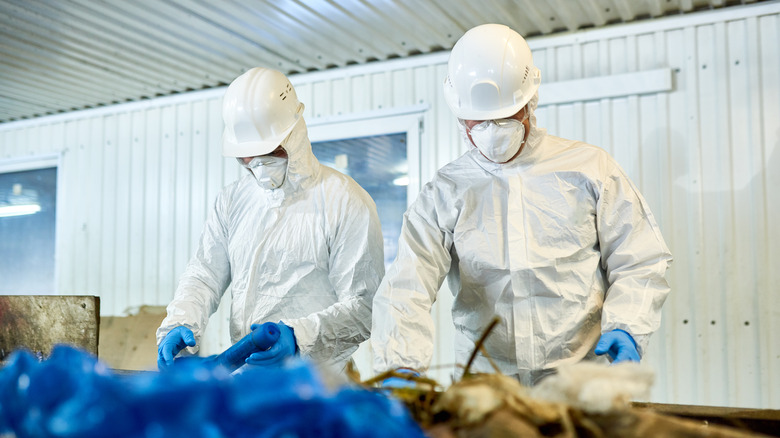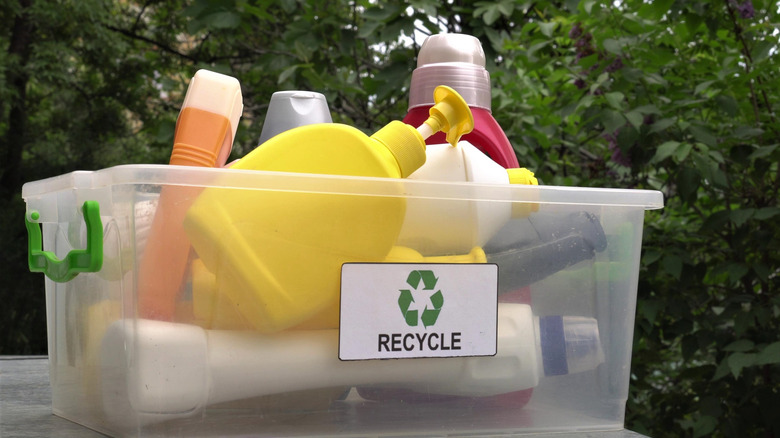How To Properly & Safely Dispose Of Bleach
Liquid bleach is a long-used cleaning staple that can be used to get your home sparkling for a low cost. At the same time, it is considered hazardous waste. This is because bleach can irritate the skin, eyes, and respiratory passages. It can also cause dangerous chemical reactions if incorrectly combined with other household cleaning agents. When handling bleach in any capacity, including its disposal, it's important to take precautions for the well-being of yourself and your home.
Scientific consensus indicates that chlorine bleach starts degrading about 6 months after formulation. Between 6 and 12 months, the solution should still be potent enough to use as a household disinfectant. But, if you haven't finished using all of your bleach after a year, it's time to toss the bottle.
Regulations for bleach disposal differ between businesses and households. Businesses that use large volumes may take more precautions during disposal, such as taking the bleach off-site to a special waste facility. However, the amounts of bleach used in residences are typically small enough to be discarded in the home. Here's how to properly and safely dispose of excess or expired household bleach.
Dilute the bleach and pour it down the drain
The good news is, that the majority of home cleaning products, bleach included, are water-soluble. That means they are mixed with water for cleaning, and ultimately, in household amounts, they are designed to be safely disposed of through home plumbing. Technically, bleach is corrosive to metal surfaces, including copper, which is a common pipe material in residential plumbing. With prolonged, concentrated contact, it can also dissolve certain plastics, such as PVC, another common drain pipe material. However, no matter the makeup of your plumbing, disposing of diluted household bleach down the drain, especially when it is expired, is generally safe with the right precautions.
You can dilute bleach by pouring it down the drain while you simultaneously run the tap. This will ensure it is expelled through your pipes and past your drain pipe's p-trap. If bleach sits in the p-trap, you run the risk of potential chemical reactions with other cleaners that go down the drain. So, following bleach with plenty of water is essential. You may also choose to combine bleach and water in a separate container to dilute it before then pouring that combination down the drain. But even then, you'll probably want to make sure that moves along with some more running water.
Taking health and safety precautions when disposing of bleach
The most important precaution to take while discarding bleach is to not combine it with any other household cleaning products. Combining bleach with other agents, like ammonia or acids (including vinegar), can produce toxic gasses that damage the lungs. Plus, the chlorine in bleach mixed with certain chemicals like hydrogen peroxide can cause dangerous, explosive chemical reactions. When dumping bleach, even if it is expired or diluted, it's best to hold off on simultaneously discarding other cleaners.
Mixing bleach with other cleaners is especially hazardous, but bleach on its own can also be harmful if precautions aren't taken. According to The National Institute of Health, bleach can irritate the skin, but is even more damaging to the eyes and respiratory tissue. If you get it on your skin, you should rinse the exposed area well with water as quickly as possible. As a preventative measure, you may choose to wear protective cleaning gloves while handling bleach in the first place. Not only will this prevent direct skin contact with the concentrated chemical, but it also mitigates the risk of spreading from your hands to the more vulnerable mucous membranes.
To further protect from bleach's harmful effects on the respiratory system, make sure your space is well-ventilated. Opening doors and windows will increase airflow, and you can turn on a fan if you have one available. If you are especially sensitive to bleach's distinct fumes and ventilation is not enough, consider wearing goggles and a face mask for extra protection.
Flushing diluted bleach down the toilet
Much like the drain, flushing bleach down the toilet is another acceptable household disposal method. This may not be surprising if you've ever used a toilet bowl cleaner with bleach as the active ingredient. But if you choose to send excess bleach away with the push of a handle, look again at dilution as the best practice.
If you are only disposing of the last bit of bleach in the bottle, the water in the toilet bowl will probably work as a diluting agent. But any more than that, you should take further precautions by flushing small amounts in multiple batches. Or again, consider diluting the bleach with water in a separate container, and then flush that solution down the toilet. If any bleach gets on your toilet seat, be sure to wipe it well with additional water or a damp cloth to avoid any accidental contact with skin.
Disposing of bleach at a household hazardous waste facility
Are you still worried about diluting the bleach enough or accidentally mixing it with hazardous chemicals? Since bleach is classified as household hazardous waste, you should be able to take it to a disposal plant. In fact, some municipalities may even request that you take unused bleach to a household hazardous waste facility rather than attempting to dispose of it at home. As always, check with your local laws and regulations before disposing of any chemicals.
Before heading to your local disposal facility, you might want to do some research. Generally, household hazardous waste plants are only accessible to people who live in a particular area. Some may not accept all chemicals. To save yourself time and frustration, it's a good idea to call beforehand and confirm that a particular location will accept your unused bleach. If you're struggling to find your local household hazardous waste facility, you can call your municipality's waste disposal services or check Earth 911's Recycling Center Directory.
Donate or give away unused, unexpired bleach
If you have bleach that is less than a year old and no longer have a use for it, consider giving it to a friend, family member, or neighbor. And if you can't hand it off to someone you know personally, you may be able to donate it. Local soup kitchens, homeless support organizations, and animal shelters will often cite bleach as an item on their list of accepted donations. This is an excellent option for reducing hazardous waste and giving back to your community.
It is worth reiterating that donating or giving away your bleach should only be done if the bleach is not expired and ineffective. Mary Brylinski, a product specialist at Clorox, tells the Weill Cornell Environmental Health & Safety department that as bleach degrades at a rate of 20% each year, it eventually becomes a solution of salt and water. So if your bleach has reached that one-year mark, you should look to one of the following disposal methods.
Recycle plastic bleach containers in a few straightforward steps
Recycling regulations vary by region, so you will want to double-check what items your local waste management system is actually able to recycle. But assuming they accept common plastics, it may be less complicated to recycle empty bleach bottles than you think. After you have safely disposed of all of the container's contents, give the inside of the bottle a couple of good rinses with water, and allow it to dry. Replace the cap, put the bottle into your plastic recycling bin, and voila! Consider that bleach bottle recycled.
If you are cleaning with bleach from any major brand, your container is likely marked somewhere with a symbol that looks like the number 2 inside of a triangle. This recycling symbol, also known as a resin identification code (RIC), indicates that the bottle is made of a plastic called HDPE (high-density polyethylene). Luckily, this category of plastic is easily recycled in most places. From toys and outdoor furniture to bottles for non-food items, your bleach containers have the potential to take on new life in various applications!
